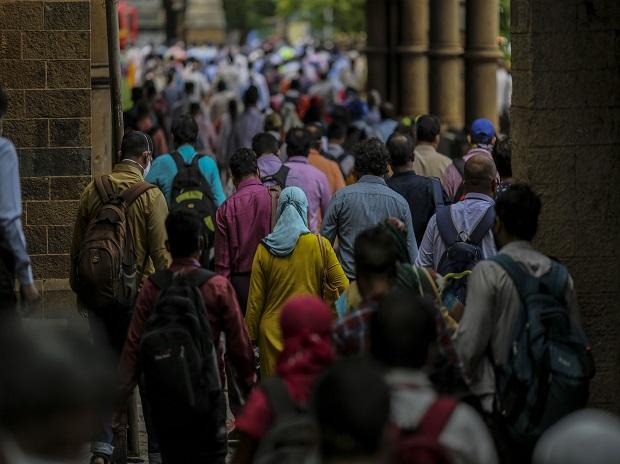India’s urban unemployment rate dropped for the fifth consecutive quarter in the July-September period of 2022-23 (FY23) to 7.2 per cent, according to the latest Periodic Labour Force Survey (PLFS) released by the National Statistical Office (NSO) on Thursday.
The unemployment rate in current weekly status terms for all ages in the September quarter (second quarter or Q2) of FY23 is the lowest unemployment rate recorded in more than four years, from the time the NSO launched India’s first computer-based survey in April 2017.
The unemployment rate among men and women has been estimated at 6.6 and 9.4 per cent, respectively. It has been showing continuous decline since the April-June quarter (first quarter, or Q1) of 2020-21, when it was estimated at 12.6 per cent.
Earlier, the monthly data released by the Centre for Monitoring Indian Economy (CMIE), which conducts its own survey, had also shown that except August, India did well on the employment front in Q2, as the jobless rate remained below 7 per cent, although there was a divergence in the rural and urban labour markets.
The CMIE data had shown that the labour markets made a strong rebound in September, with the unemployment rate dropping to 6.4 per cent, from 8.3 per cent in August, which was the highest level in 12 months.
The labour market conditions improved across rural and urban regions. It was primarily rural India that made the bigger contribution to the turnaround in labour conditions.
“Rural labour participation rate (LPR) improved by 0.29 percentage points in September.
It rose from 40.39 per cent in August to 40.68 per cent. In June this year, the rural LPR had fallen below 40 per cent for the first time since the pandemic-stricken month of April 2020,” CMIE noted in a statement.
The latest quarterly survey also showed that the labour force participation rate (LFPR), which shows the percentage of persons either working or seeking work in the population, saw a marginal increase in Q2 to 47.9 per cent, from 47.5 per cent in Q1.
The LFPR for females registered a marginal increase of 0.8 percentage points and stood at 21.7 per cent, from 20.9 per cent in Q1, although LFPR for males decreased marginally from 73.5 per cent in Q1 to 73.4 per cent in Q2.
Also, the worker-to-population ratio (WPR), which is the percentage of employed persons in the population, also saw a marginal increase of 0.6 percentage points sequentially to 44.5 per cent in Q2. The female WPR stood at 19.7 per cent, against the 68.6 per cent for males in Q2.
Considering the importance of availability of the labour force data at more frequent time intervals, the NSO in April 2017 launched India’s first computer-based survey to measure the dynamics in labour force participation in the short interval of three months for urban areas.
Prior to the PLFS, the National Sample Survey Organisation (now known as NSO) under the Ministry of Statistics and Programme Implementation used to bring the data related to employment and unemployment based on household socioeconomic surveys once in five years.
Note:- (Not all news on the site expresses the point of view of the site, but we transmit this news automatically and translate it through programmatic technology on the site and not from a human editor. The content is auto-generated from a syndicated feed.))



